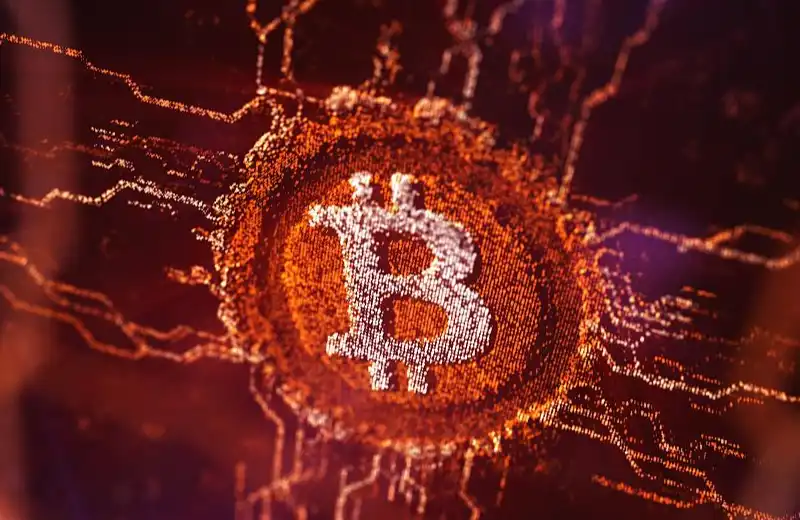What should we make of Stablecoins after the Silicon Valley Bank explosion?
原文标题:《 硅谷银行暴雷后,我们应该如何看待稳定币? 》
原文作者:veDAO
Every cycle has a different narrative, and in the last bull market, the central narrative was DeFi and distributed storage Filecoin.
Then this round may break out in the following aspects: ZK plate, Arb plate, Polygon ecology, BTC layer 2, stablecoin, LSD.
In previous installments, veDAO has given you a series of interpretations on the ecology of BTC. This time, veDAO will consider the industry from the perspective of stablecoin.
Silicon Valley bank explosion, USDC decoupling
The biggest surprise of the weekend was the collapse of a Silicon Valley bank. For more on the failure of Silicon Valley banks, VeDAO Institute will present another article, which will focus on the development of Stablecoins in the era of economic crisis from the perspective of Stablecoins.
But first, we need to start with the concept of what a stablecoin is.
StableCoins are a manifestation of cryptocurrencies. Their value is often anchored to mainstream fiat currencies in the real world. Stablecoins also provide value stability that other cryptocurrencies do not have. This stability makes them attractive to investors and traders who want to hedge against the volatility of other cryptocurrencies.
However, these tokens themselves are not immune to volatility, and stablecoins can also decoup from the pegged currency when faced with a large black swan event. That means they deviate from their pegged value.
Currently, there are three common types of stablecoins:
Legal stablecoin: USDT, USDC, BUSD
Decentralized Stablecoin: Mainly DAI
Algorithm Stablecoin: LUNA is the classic black swan of 2022.
Algorithm-based stablecoins, as a new concept, have always attracted the attention of the industry, but the life cycle of LUNA and UST is not long. Therefore, this paper will mainly discuss the modes of the first two stablecoins.
According to dune, fiat Stablecoins still dominate the stablecoin race.

As shown above, USDT+USDC+BUSD has reached 81.4% of the total stablecoin market. Despite the power of fiat stablecoins, they have faced a succession of real-world interventions in recent years. Just last month BUSD, one of stablecoins, was suspended by US regulators on the grounds that it was "defined as a security" and began examining the issuer behind it, Paxos.
However, more serious things were to come. The Silicon Valley bank explosion, as mentioned above, also directly triggered the French currency Stablecoin and the dollar decoupling boom, resulting in huge distrust in the market Stablecoin.
USDC issuer Circle announced on March 10 that the USDC had been de-pegged from the dollar, with about $3.3 billion of its $40 billion in USDC reserves sitting at the now-defunct Silicon Valley Bank. Affected by the decoupling event, the exchange rate between the USDC and the undecouped stablecoin USDT once fell below 0.9, and the lowest fell to 0.85. Given the fallout from the USDC, other stablecoins followed suit.

Not only that, but the decoupling boom triggered by the USDC extends to decentralized stablecoins. MakerDAO's DAI, a decentralized stablecoin based on the Ethereum protocol, also briefly depegged from the dollar.

Although the USDC and DAI quickly restored their exchange rates to the dollar after a brief decoupling, the resulting market distrust of stablecoins has only worsened. Many users even joked: "Although we have been skeptical about the real value of USDT mortgage, it now seems that USDT is Always King."
The market needs a new decentralized stablecoin
旧有的 USDC 和 DAI 出现了脱钩,没有脱钩的 USDT 则一直无法证明自己的 Token 有足额的现金抵押。在老牌稳定币陷入信任危机的同时,我们不妨把目光转向新兴的去中心化稳定币项目。
HOPE: Use BTC and ETH as value support

Basic Information:
Official website: https://hope.money/
On Twitter: https://twitter.com/hope_ecosystem
简介:HOPE 是一个去中心化的稳定币,其 Token $HOPE 的底价将随着 BTC 和 ETH 的价格浮动,从 0.5 美元左右开始。HOPE 生态包括 HopeSwap、HopeLend、HopeConnect 与 HopeEcho 四个协议,提供交易、借贷、衍生品、合成资产功能。
Details:
HOPE economic model:
$HOPE:是生态系统的由储备支持的原生定价 Token ,将以 0.5 美元的折扣价推出,并随着加密货币市场的复苏逐渐实现挂钩。
\(stHOPE:是\)HOPE 质押的 Token 化表示。通过质押,用户可以在生态中使用 HopeSwap、HopeLend、HopeConnect、HopeEcho 等应用。此外,用户还能通过质押\(HOPE,可获得\)stHOPE,并通过持有\(stHOPE 来获得\)LT 奖励。
$LT:是 HOPE 生态的激励与治理 Token ,用来激励用户,参与 HOPE 生态并进行治理。
veLT:是\(LT 在行使治理权时,投票锁定的 Token 化表示,veLT 持有者可以获得\)LT 奖励加成,并可以对治理提案进行投票,决定包括 $HOPE 货币 政策 、Teasury 政策和协议收入分配在内的诸多关键议题。
HOPE Ecology:
The HOPE ecosystem will consist of 4 main protocols, offering a complete and rich set of application scenarios including exchange, lending, margin, etc., around \(HOPE & \)stHOPE, and incentivize users to participate in eco-application and community governance through $LT.
HopeSwap: is an AMM Swap built on Ethereum that serves as a portal for users to the HOPE ecosystem. Users can trade quickly between \(HOPE, \)stHOPE, \(LT and other assets, or provide liquidity for trading pairs for \)LT rewards and fee sharing.
HopeLend: is a multi-liquid pool unescrow lending agreement. Lenders can deposit liquidity in order to earn interest; In turn, borrowers can provide collateral assets and obtain excess collateral loans.
HopeConnect: DeFi, the industry's first innovative protocol, allows users to trade derivatives on top CEX through HopeConnect without centralized asset custody.
HopeEcho: Synthetic assets that track the price of real world assets (RWA), including stock indexes, fixed income instruments, commodities, foreign exchange, etc., lowering the barrier to access to TradFi services.
Running logic:
第一阶段:$HOPE 在发展初期将由 BTC 和 ETH 作为支撑,并进行 Token 的铸造和销毁。

Stage 2 and 3: \(More stablecoins will be added to the reserve pool of HOPE until the reserve pool reaches \) several times the market value of HOPE (which is not yet certain), $HOPE will be gradually anchored from $0.50 to $1 until it becomes stablecoins.

Angle: A decentralized stablecoin anchoring the euro
Basic Information:
Official website: https://www.angle.money/#/
Twitter: https://twitter.com/AngleProtocol
简介:Angle 是一种去中心化、资本高效和超额抵押的稳定币协议,由运行在开放区块链上的智能合约组成。Angle 的去中心化解决方案弥补了当前方法的缺陷,并充分利用了中心化和去中心化协议的长处,它还具有超额抵押设计所带来的稳健性,同时保持与低抵押设计类似的资本效率。Angle 于 2022 年 11 月上线,截止目前,其 Token $Angle 市值约为 6700 万美元。
Details:
Angle Economic Model: $ANGLE: Total supply of 1 billion pieces, minted by Angle Governor Multisig.

veANGLE:veANGLE 代表「投票托管」ANGLE,是 Angle 协议的治理 Token 。ANGLE 的 Token 经济学于 2022 年 1 月进行了升级,能够将 ANGLE 锁定为 veANGLE,使它成为了一个基于 Curve 的 veCRV 和 Frax 的 veFXS 机制的归属和收益系统。veANGLE 的关键属性,除了作为治理 Token 之外,还在于它不可转让且不在流动市场上交易。
Angle run logic:Angle worked by getting people to swap stable assets for stable assets in a 1:1 ratio, in a 1:1 ratio :1 euro of collateral, you can get 1 stablecoin, 1 stablecoin, you can always redeem 1 euro worth of collateral.
This protocol involves 3 groups, common in other DeFi protocols, all of which benefit from Angle:
Stable seekers and holders (or users) who create, use, or destroy stable assets
A hedging agent (HA) can acquire on-chain leverage in the form of perpetual futures on one trade of an agreement, and by doing so ensures that the agreement is protected from fluctuations in its collateral.
Standard liquidity providers (SLPS), who bring additional collateral to the agreement and automatically earn interest, transaction fees, and rewards.
Angle will be able to support a number of different stablecoins, each with a different type of collateral. It will begin with a stable euro supported by the USDC and DAI.
RAI: V God's favorite decentralized Stablecoin

Basic Information:
Website: https://app.reflexer.finance/#/
Twitter: https://twitter.com/reflexerfinance
Description: Reflexer is a platform that allows you to issue unpegged stable assets using cryptocurrency collateral. RAI is the first asset of its kind. Like the original DAI, it is generated only by over-pledging ETH, and has a local money rate calculated by the on-chain PI controller to correspond to complex market conditions, so as to drive the market price of RAI to converge towards the redemption price.
Details:
The exchange rate of RAI/USD is determined by supply and demand, and the council attempts to stabilize the price of RAI by constantly devaluing or revaluing it. The supply and demand mechanism is between the SAFE user (the user who generates RAI with ETH) and the RAI holder.
Compared with other stablecoins on the market, RAI proposes a new concept: redemption mechanism. RAI uses an on-chain PI controller to set the rate of change of its redemption price, called the redemption rate, expressed as an annualized interest rate. By adjusting the redemption rate, RAI can precisely control the supply quantity of stablecoin in the market, thus making the price of RAI close to the ideal price set by the system.
RAI's monetary policy consists of four elements:
赎回价格:RAI 协议提前制定的 Token 预期价格。
Market price: The actual trading price of RAI in the secondary market.
Redemption rate: RAI depreciation calculation.
When the market price of RAI. When the redemption price continues for a period of time, the redemption rate will turn negative.
When the market price of RAI. When the redemption price continues for a period of time, the redemption rate will turn positive.
Global settlement: Close the agreement, and the user redeems the collateral.
Comparison of pros and cons:
Advantages: Without anchoring $1, the agreement can devalue or revalue the RAI based on changes in the market price of the RAI; Less loss from exposure risk.
Disadvantages: The audience is so narrow that it has not been favored by the market until now; The lack of liquidity is also an important reason for the inability to expand the market.
summarize
The above three decentralized Stablecoin projects are all newly emerging stablecoin ecosystems in the market, or those whose potential has not yet been discovered. In fact, the current narrative based on decentralized stablecoins is flourishing enough. In addition to the above three, LUSD, FRAX, KAVA, MIM, HAY and other stablecoin projects are also worth paying attention to.
After all, although decentralized stablecoins currently have a low market share, they are also not immune to the impact of real black swans. But to some extent, as the global economic environment deteriorates and the world enters the stock game, there will be more and more black swan events. At this point, legal stablecoins, which have no coinage rights and are threatened by centralization, are not necessarily a good choice.
The decentralized stablecoin, which is still in its early stage of development, has a greater degree of imagination in the narrative.
This article is from submissions and does not represent the views of BlockBeats.
Welcome to join the official BlockBeats community:
Telegram Subscription Group: https://t.me/theblockbeats
Telegram Discussion Group: https://t.me/BlockBeats_App
Official Twitter Account: https://twitter.com/BlockBeatsAsia


 Forum
Forum Finance
Finance
 Specials
Specials
 On-chain Eco
On-chain Eco
 Entry
Entry
 Podcasts
Podcasts
 Activities
Activities
 OPRR
OPRR








